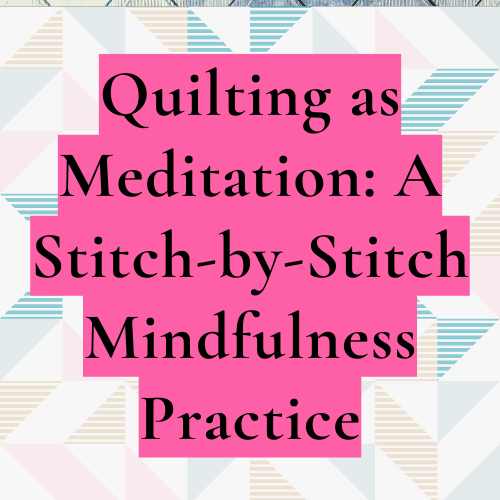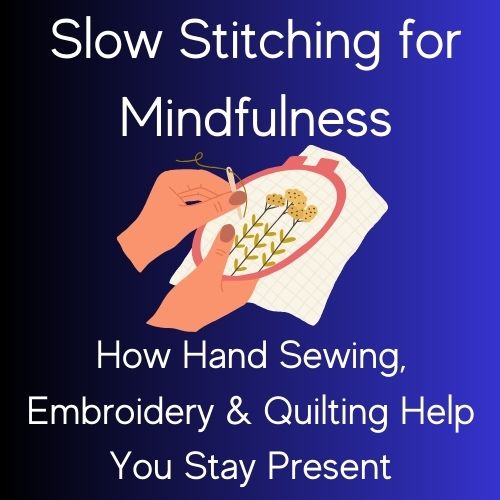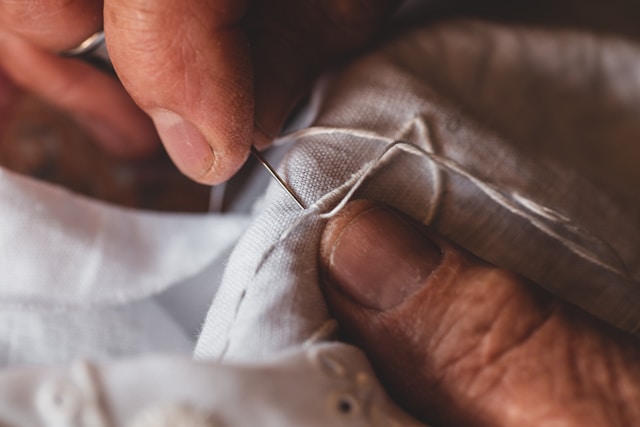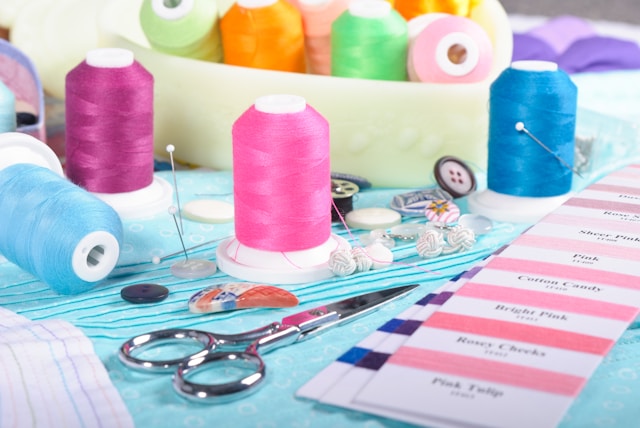Quilting has long been a practice of patience, precision, and artistry. But beyond creating something beautiful, the act of quilting can be a deeply meditative experience—an opportunity to quiet the mind, focus on the present moment, and find peace in the rhythm of each stitch.
If you’ve ever lost yourself in the process of piecing, cutting, or hand-stitching, you may have already felt this sense of mindfulness. The key is to become more intentional about it. Below is a guided practice designed to transform quilting into a moving meditation, helping you slow down, breathe deeply, and fully engage with your craft.
🧶 Want to explore this in more depth? Click here to join Craft to Heal.
Step 1: Setting an Intention for Your Quilting Session
Before you begin working on your quilt, take a moment to set an intention. Ask yourself:
- What do I want to bring into this session? (Calm, focus, joy?)
- How do I want to feel as I work?
- Can I let go of perfection and embrace the process?
This moment of reflection helps shift quilting from just another task on your to-do list to a mindful, intentional practice.
Step 2: Finding Your Rhythm with Breath & Stitching
As you sew, whether by hand or machine, try matching your breath to your movements.
For Hand Quilting:
- Inhale – Push the needle through the layers of fabric, feeling the slight resistance.
- Exhale – Pull the thread through, letting the stitch settle into place.
- Inhale – Guide the needle back up for the next stitch.
- Exhale – Complete the motion, relaxing your hands and shoulders.
For Machine Quilting:
- Inhale – Gently guide the fabric under the presser foot.
- Exhale – Let the feed dogs pull the fabric as the stitches form.
- Inhale – Pause briefly as you reposition your hands or adjust the fabric.
- Exhale – Continue stitching, releasing tension with each breath.
The goal is to create a seamless connection between breath and motion, making quilting feel like a steady, grounding practice.
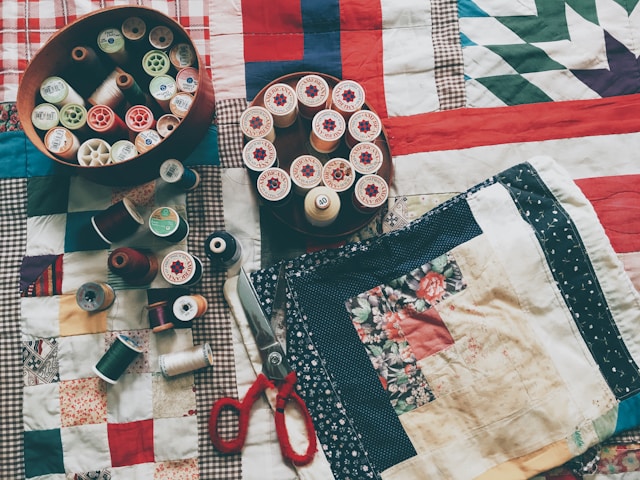
Step 3: Engaging All Five Senses in the Quilting Process
Mindfulness isn’t just about breathing—it’s about fully immersing yourself in the present moment. As you quilt, bring awareness to each of your five senses.
👁 Sight – Observe the Art Unfolding
- Watch the colors and patterns of your fabric coming together.
- Notice the straightness or waviness of your seams without judgment.
- See how your quilt grows, piece by piece, stitch by stitch.
Instead of focusing on mistakes or imperfections, simply observe the beauty of your work in progress.
🖐 Touch – Feel the Texture of the Materials
- Run your fingers over the soft cotton, the raised seams, the smooth batting.
- Notice the temperature of the fabric—warm from your hands or cool in your lap.
- Pay attention to the slight pull of the thread or the pressure of the sewing machine under your hands.
Let the tactile experience ground you, keeping you connected to the physical moment.
👂 Sound – Listen to the Rhythm of Your Work
- The soft hum of the sewing machine.
- The crisp snip of scissors cutting through fabric.
- The whisper of thread being pulled through layers.
Each sound becomes part of the meditative rhythm, pulling you deeper into the experience.
👃 Smell – Breathe in the Familiar Scents of Quilting
- The clean, slightly dusty scent of cotton fabric.
- The earthy smell of a well-loved quilt-in-progress.
- The faint whiff of steam rising from a freshly pressed seam.
Taking a moment to notice scent brings another layer of mindfulness to your quilting practice.
👅 Taste – Anchor Yourself in the Moment
While quilting doesn’t involve taste, notice:
- The feel of your breath on your lips as you exhale.
- The lingering flavor of a warm cup of tea or coffee as you sew.
Bringing attention to this small detail keeps you present and engaged.
Step 4: Embracing the Imperfections
One of the biggest challenges in mindfulness—and in quilting—is letting go of perfectionism. Rather than worrying about every seam being perfect or every stitch lining up exactly, try repeating a gentle mantra as you quilt:
- Each stitch is part of the story.
- Imperfections make it unique.
- The process is just as valuable as the outcome.
Mistakes aren’t failures; they’re part of the experience. When you embrace this mindset, quilting becomes not just an art, but a practice of patience and self-compassion.
Step 5: Closing with Gratitude
Before putting your quilt away for the day, take a moment to appreciate what you’ve created. Place your hands on the fabric and acknowledge:
- The time and care you’ve put into your work.
- The creativity that flows through you.
- The way quilting provides a space for peace and focus in your life.
Take one last deep breath, feeling the weight of your quilt, the steadiness of your body, and the calm that remains from your mindful stitching.
Why This Works
This quilting practice blends focused attention meditation (staying with your breath and stitching) with mindfulness meditation (observing sensations without judgment). By fully engaging with your quilt through sight, touch, sound, and breath, you transform your craft into a meditative, grounding experience.
Try this next time you quilt—even for just a few minutes—and notice how your connection to your craft, and your sense of inner peace, begins to deepen. 🧵✨
